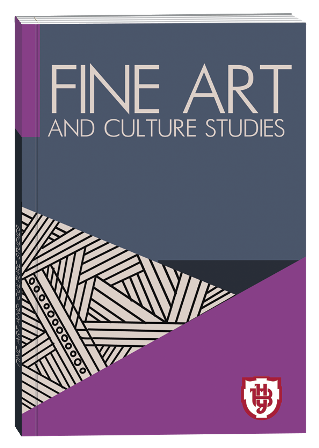THE EDUCATIONAL FUNCTION OF MILITARY ORCHESTRAS IN THE EUROPEAN CULTURAL PROGRESSION IN THE XIX CENTURY
DOI:
https://doi.org/10.32782/facs-2024-2-18Keywords:
military music, military orchestras, cultural expansion.Abstract
The purpose of the article is to identify the characteristic features of socio-cultural modification, constructs resulting from the diffusion of ancient traditions with evolutionary transformations of military music The research methodology. The cultural orientation of the content required a combination of narrative with qualitative methods, also optimizing interdisciplinary approaches. Scientific novelty Since there is still no comprehensive culturological study in Ukraine not only of Western European military music but also of domestic, the presented outline is novel in this genre and is hoped to fill to some extent one of the numerous gaps in this field. The practical significance of this article lies in the fact that its positions and conclusions can be useful and involved in the development of educational programs, manuals, lecture courses, seminars on issues of music culturology, cultural history, musicology, as well as in special courses devoted to the musical art of Ukraine and Europe and in courses on military logistics, in the system of secondary, special, and higher education, in museum-research work. Conclusions. At present, the formation of military music as an independent socio-musical formation has become the result of the reorganization, instrumental innovations, aesthetic achievements, and musical professionalization of European army structures. During the specified period, the activities of European military orchestras formed a positive architecture of cultural transmission relationships, which objectively became a political instrument for the dissemination of European socio-humanitarian culture. Cultural ambassadors in the uniform of military musicians contributed to the spread of European musical achievements, stimulated general, global-local processes of cultural exchange. In the context of today, the paradigm of the functionality of military musical art as a cultural universe, in which the restoration of historical justice is organically integrated with Ukrainian military music culture, is particularly activated.
References
Applegate, Celia. Men with Trombones. In The Necessity of Music: Variations on a GermanTheme, by Celia Applegate, Toronto: University of Toronto Press, 2017. pp. 211–237.
Araci, Emre. Giuseppe Donizetti at the Ottoman Court: A Levantine Life. The Musical Times 143, 2002. pp. 49–56.
Brixel, Eugen, Gunther Martin, and Gottfried Pils. Das ist Österreichs Militärmusik: Von der “Türkischen Musik” zu den Philharmonikern in Uniform. Graz: Kaleidoskop, 1982. 384 s.
Clive, Peter. Beethoven and his world. A biographical Dictionary. Oxford, New York 2001. 540 p.
Ehrlich, Cyril. The Music Profession in Britain since the Eighteenth Century: A Social History. Oxford: Clarendon Press, 1989. 280 p.
Feil, Arnold. Metzler Musik Chronik: Vom frühen Mittelalter bis zur Gegenwart. Verlag, Stuttgart 2005. 907 p.
Heidler, Manfred. Militärreformen im Spiegel der Militärmusik. In Reform—Reorganisation—Transformation. Zum Wandel in deutschen Streitkräften von den preußischen. Heeresformen bis zur Transformation der Bundeswehr, edited by Karl-Heinz Lutz, Munich: Oldenbourg, 2010. s. 523–544.
Hofer, Achim. Die Königlich Preußische Armeemarschsammlung 1817–1839. Entstehung, Umfeld, Beschreibung. Wien: Kliment, 2007. 128 s.
Lambert, Barbara. Technical Developments of Musical Instruments: Brass. The Orchestra: Origins and Transformations, edited by Joan Peyser,. New York: Charles Scribner’s Sons, 1986. pp. 153–168.
Rüger, Jan. The Great Naval Game: Britain and Germany in the Age of Empire. Cambridge University Press, 2007. 338 p.
Schubert, Anselm. Dimitrij Bortnjanskijs Vertonung der Preußischen Kirchenagende von 1823/24. Jahrbuch Für Liturgik Und Hymnologie, 2015. 54, pp. 35–41.







